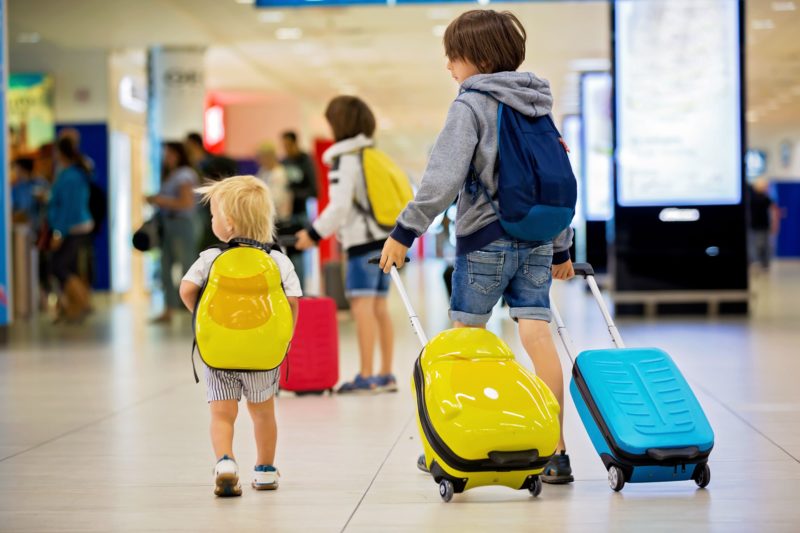Traveling with children can be a delightful experience, yet it is often accompanied by challenges, one of which is motion sickness. Understanding how to handle kids motion sickness is crucial for a smooth journey. This condition is common among children, and if not managed properly, it can turn a much-anticipated trip into an ordeal.
As a parent, especially a single parent, knowing the right strategies to alleviate this issue is vital. In this article, we will explore various techniques to help children cope with motion sickness, ensuring a pleasant travel experience for the whole family.

Understanding Motion Sickness in Children
Motion sickness occurs when there is a disconnect between what your childs eyes see and what their inner ears sense, leading to dizziness, nausea, and sometimes vomiting. It is more prevalent in children due to their developing sensory systems.
Symptoms to Watch For
Recognizing the symptoms of motion sickness early can help you take action before it worsens. Common symptoms include:
- Nausea
- Dizziness
- Pale skin
- Cold sweats
- Vomiting
Knowing these signs allows you to intervene promptly, alleviating your childs discomfort.
Preventive Measures
Choose the Right Seat
Positioning your child in the vehicle can make a significant difference. Opt for the middle seat in the back, where there is less motion. Encourage them to look straight ahead at the horizon, which can reduce feelings of nausea.
Maintain a Steady Airflow
Keeping the car well-ventilated can help prevent motion sickness. Fresh air is crucial, so crack a window or use the air conditioning to maintain a steady airflow.
Light Meals and Hydration
Before and during travel, feed your child light, non-greasy meals. Avoid heavy or spicy foods that might exacerbate nausea. Also, ensure they stay hydrated with small sips of water.
During Travel: Tips and Tricks
Engage in Distractions
Keep your child occupied with activities that divert their attention away from the feeling of motion. Listening to music, storytelling, or singing songs can be effective distractions. For more ideas, check out these travel activities for toddlers.
Use Over-the-Counter Remedies
There are medications available that can help prevent motion sickness. Consult with your doctor to determine the best options for your child. Always follow the dosage instructions carefully.
Frequent Breaks
Take regular breaks during your journey to allow your child to get some fresh air and reset their senses. Short walks or simply standing outside the vehicle can be very beneficial.
Natural Remedies
Ginger and Peppermint
Ginger is known for its anti-nausea properties. Ginger candies or ginger tea can soothe the stomach. Similarly, peppermint can also be calming and help with digestive issues.
Aromatherapy
Using essential oils like lavender or chamomile can relax your child and reduce the symptoms of motion sickness. A few drops on a handkerchief can be a simple yet effective solution.
Preparing for the Journey
Packing Essentials
Always be prepared with items such as wipes, plastic bags, a change of clothes, and motion sickness bands. These can make dealing with an unexpected situation much easier. For more on what to pack, see our baby travel essentials.
Travel Planning
Plan your travel during times when your child is least likely to be affected by motion sickness. This could mean traveling during nap times or in the evening when they are more likely to sleep through the journey.
Long-Term Solutions
Desensitization
Gradually exposing your child to travel can help them become accustomed to the motion. Start with short trips and slowly increase the duration as they become more comfortable.
Consulting Professionals
If motion sickness persists, consider consulting a healthcare professional for advice tailored to your childs needs. They may provide personalized strategies or treatments.
FAQs About Kids Motion Sickness
What causes motion sickness in children?
Motion sickness is caused by a conflict between the senses. When the inner ear detects motion that the eyes do not see, it can lead to nausea and dizziness.
Can motion sickness be outgrown?
Yes, many children outgrow motion sickness as they mature and their sensory systems develop further.
Are there any foods that help with motion sickness?
Eating light snacks like crackers or pretzels can help. Ginger and peppermint are also known to alleviate symptoms.

Conclusion
Understanding how to handle kids motion sickness is essential for any parent wanting to ensure a smooth and enjoyable travel experience. By being prepared and knowing the right strategies, you can help your child feel comfortable and enjoy the journey. For more travel tips with children, consider checking out this insightful guide on traveling with kids.
This article contains affiliate links. We may earn a commission at no extra cost to you.





